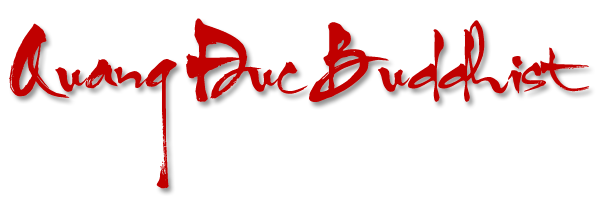Venerable Dekhung Gyaltsey Tulku Rinpoche, Spiritual Director of Kadri Bodhi Monastery Inc., Monastery President Katy Cai and the Organising Committee,
Most Venerables and other Distinguished Members of the Sangha
My fellow Guest Speakers:
Other Distinguished Guests, Our Fellow Buddhists, Ladies and Gentlemen,
First of all, I would like to pay my respect to the Indigenous Elders, past, present and emerging on whose traditional land we are today gathering.
I would also like to warmly congratulate Venerable Dekhung Gyaltsey Tulku Rinpoche and President Katy Cai for your invaluable efforts to maintain in
I am really honoured to have been invited to deliver my remark within an allocated time on a rather large topic relating to Buddhism in multicultural
Leaving aside the still debating beginning point, it has been generally accepted that Buddhism started in
As a Buddhist community, the Chinese and Sinhalese were among the first but their presence waxed and waned, particularly the Chinese as they were the main target of racial discrimination. Buddhist priests or monks came and went sporadically and not all of them were of Asian background.
From the early 1970s – when this country buried its White Australia Policy and began its multicultural journey – and especially in the 1980s, as many Buddhist communities grew rapidly in size and numbers, monks of the same cultural and linguistic backgrounds joined their religious followers in Australia – perhaps to some extent with the exception of Tibetan lamas.
In 1974, the first Tibetan Lamas – including Lama Thuben Yeshe and Lama Thubten Zopa – resettled in this country while a Tibetan community hardly existed. Tibetan Lamas have continued to resettle in numbers disproportionally to the size of the Tibetan Australian community of some 2 000 in 2018 - and for good reasons.
For the Vietnamese, Venerable Thich Nhat Hanh was the first monk coming to
After the Fall of Saigon in April 1975, the Vietnamese refugee community grew rapidly from 2 427 persons in 1976 to 41 069 only 5 years later, when the first two refugee monks, Venerable Thich Phuoc Hue and Venerable Thich Huyen Ton arrived in 1980, to be followed shortly by Venerable Thich Bao Lac in 1981. They were instrumental in the establishment and growth of the Vietnamese Buddhism in
Most Venerable Thich Bao Lac is currently Head of the Unified Vietnamese Buddhist Congregation in Australia-New Zealand (and he is here in attendance among the distinguished Sangha). At Census 2016, the Vietnamese Australians number 300 000 of whom around 56 % are Buddhists.
The Chinese diaspora is much larger and far more complex as Chinese settlers came not only from mainland
The Tibetan community is small and I believe predominantly Buddhist. While I don’t have data on the ratio of believers to monks and nuns, I think the Tibetan Australians are blessed with numerous members of the Sangha of the four major schools of Tibetan Buddhism, in the provision of pastoral care to their needs and to other non-Tibetan Buddhist communities and mainstream Australia,
The three main Buddhism Vehicles have their own traditions: The Chinese and Vietnamese are mainly Mahayanists while the Thai, Cambodian, Lao, Burmese and Sri Lankans are adherents of Theravada. The Tibetans strictly follow their own rituals specific to the Vajrayana. In essence however, Buddhist philosophy remains largely the same for all Buddhist believers and Sangha. All have to adapt to changes in
Buddhists are a minority with 2.4% of the Australian population or 563 677 persons at Census 2016, of whom the Vietnamese and Chinese share a significant part.
The Vietnamese Australian Buddhist community (around 156 000) and their Chinese counterparts (estimated around 180 000) are well taken care of by their respective Sangha. The first generation of Sangha tend to devote all of their time within their own linguistic community whereas the second generation can navigate in and out across language barriers thanks to their bi- or multilingual ability. For example, just to name a few of the younger generation, they are the monks and nuns of
In spite of strong intention to promote Buddhism to Australians of all backgrounds, the Chinese and Vietnamese-born Sangha may not have any spare capacity or resources at their disposal to engage themselves with mainstream
As a Buddhist, I feel personally fortunate to have seen a variety of Buddhist rituals and listened to Dharma Talks by Buddhist Masters of the three Vehicles. Among the most famous are of course His Holiness the 14th Dalai Lama and His Holiness the 17th Karmapa during their visits to
Conclusion:
Broadly speaking, Buddhism in
* In multicultural
* In multicultural
* In multicultural and secular
In Metta and thank you for your attention -/
References:
[1989] Paul Croucher, A History of Buddhism in Australia 1848-1988, New South Wales University Press, Sydney
[2011] Cristina Rocha and Michelle Barber eds, Buddhism in

